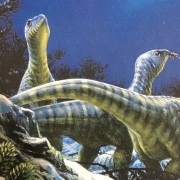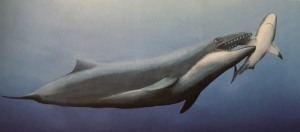Life’s a Surf Coast beach and then some
Summer’s here and it’s time to get your beach on. Whether it’s the thumping, cranking, millpond smooth, rugged cliff-faced or idyllically picturesque beach that takes your fancy, Surf Coast, Bellarine and Geelong beaches have you covered. Admirably.
While they’re in hot demand for sun-lovers, surfers, sandcastles and swimmers, for paddlers and paragliders, indeed for all manner of beach-bums, there’s also a secret life to our beaches that slips under the radar for the many visitors flooding into town. And for many locals, too.
These are stories and marvels that live quietly alongside the wind-sculpted dunes, sea-carved ochre cliffs, the sandy rocky coast and grey-green eucalypts that line the watery expanses of Bass Strait and Port Phillip Bay. Prick your ears, spread your wings a little, and you might just hear them whispering through the mists of time as you comb the beaches, sprawl yourself on the sand or take in the clouds overhead as you float offshore on your back.
Maybe the ghosts of the “yellow men” who left an oar behind at Point Lonsdale long before the days of Buckley, according to Aborigines. Or the mysterious skull found in the water at Queenscliff, and now in its museum, or tales of old Kerosene Jack wearing a tattooed map of Benito’s Treasure on his butt.
Shipwreck horrors and courage abound, the Barwon Heads pub hosted terrorists plotting the destruction of the MCG, Apollo Bay has its terrorist hermit Nobby Hill and fishermen stories of peculiar things in the sky before Freddie Valentich went missing to a purported flying saucer. Not to mention the palaeontological marvel of Dinosaur Cove.


Anglesea hosts swags of metaphysical blue vivianite, Cumberland River has geological architecture to die for and Fairhaven a terrifying shark encounter lifesavers almost died for. At 13th Beach you’ll find tales of a sunken shipwreck that lured politicians into illegal dives, whale carcasses too. At Breamlea a shipwrecked rhinoceros, more whale cases at Point Addis, nudists too, and mysterious underground bunkers dug out along the foreshore at Torquay.
Yet another whale carcass, a 70-tonne blue whale at Cathedral Rock, held up traffic on the Great Ocean Road as cranes and trucks relocated her to the sewerage farm at Werribee to properly decompose before her bones were treated and placed in the foyer of the Melbourne Museum. People still talk of the pong.
The Lorne main beach nearby once hosted the biplanes of early aviators while quicksand claimed pioneering youngsters and shipwreck salvage divers drank their own urine in the local pubs to prove their toughness. The glory days of the town’s The Arab coffee lounge live large in the hearts of locals and visitors alike. Glory-day surfing yarns, many unpublishable, are a buck a bag the full length of the coast.
TV’s Seachange and Round the Twist live on in the minds and imaginations of Barwon Heads, St Leonards and Aireys Inlet visitors, the charming Oddball flick’s penguin rescue to more again if you drift west of the Twelve Apostles down to Warrnambool.


Back around Geelong and the Bellarine, you’ll find everything from bayside tightrope walkers and wartime bathing beauty contests to helicopter crashes, 16th century Portuguese explorers and Limeburner Point’s Geelong Keys, Siberian migratory birds, piers on fire, ships shot and sunk in Corio Bay, and strange rock art only properly visible from the air.
While the beaches hold a wealth of folklore, the southwest hinterland holds a similar trove of mystery, myth and magic for the curious-minded visitor – everything from volcanoes and megafauna to secret wartime airbases and bunyips. Think floating islands, giant ferns, spotted tiger quolls, exquisite waterfalls, pre-settlement tales of sealers and Aborigines, attacks on Aborigines and you’re in the ballpark.
You’ll find subterranean gurglings beneath the Stony Rises, ancient megafauna trails across the plains, carnivorous snails hidden deep in the Otways, rain gauge crater lakes at Red Rock. It’s Ripley’s Believe It Or Not territory.

Hard to beat the bunyip scare of the 1840s bunyip scare, though, after a so-called giant bunyip bone was found at Timboon. Identified by a local Aborigine, who attested to vicious family run-ins with the cryptozoological beast, the bone set off a public hysteria epidemic with people afraid to leave their homes at night for weeks on end.
Matters weren’t helped any by reports of livestock mauled by unknown causes on properties from Lara to Barwon Heads. The bone disappeared over time but is suspected of belonging to a diprotodon, a pre-Ice Age rhino-sized wombat from the region’s megafauna catalogue.

Long gone now, like the Mahogany Ship somewhere under the sand dunes down past Warrnambool. Throw yourself down an interweb rabbit-hole while you’re soaking up the rays on a Surf Coast beach and see what that turns up. Portuguese caravels, secret maps, international politics, strange visitors to Corio Bay in the 1520s and more.
Might be time to stop, though, when you hit the New York art exhibition of a few years back featuring a Renaissance painting of the Madonna and child – and an Australian cockatoo – revving up the pre-Cook Euro arrival possibilities.
After all, that water’s calling and it won’t be warm all year.



 nasaura
nasaura